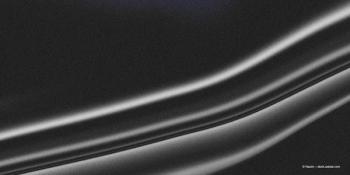
Stem cell transplantation: Restoring vision in AMD may be possible
Restoring vision in AMD may be a possibility with stem cell transplantation.
Given the high incidence of age-related macular degeneration (AMD)-with some 10 to 11 million patients affected, 2 million of which have severe visual loss-the need for treatments to restore vision is clear.
Stem cell therapies are among those treatments considered as potentially viable to treat degenerative diseases include direct replacement of host cells and more commonly secretion of trophic factors that facilitate survival of the existing cells. Rajesh Rao, MD, pointed out that there is a wider indication despite mutations in gene therapy that potentially can be applied across the diverse degenerative diseases especially in the presence of extensive cell loss.
The candidates for transplantation include pluripotent stem cells, embryonic stem cells, and autologous cells such as those originating in the adipose tissue, bone marrow, and fetal cells and all have been transplanted into patients with varying degrees of success as well as controversy, according to Dr. Rao, the Leonard G. Miller Professor of Ophthalmology and Visual Sciences and Pathology, University of Michigan, Ann Arbor.
The procedures to perform the transplantation include a standard vitrectomy, intraocular surgery, or introduction of the cells through the suprachoroidal space.
Cell delivery through the suprachoroidal space
In an early uncontrolled, unmasked study of suprachoroidal delivery (Ho et al. Am J Ophthalmol 2017;179:67-80), cells derived from the umbilical cord were delivered to 33 of 35 patients with bilateral dry AMD with geographic atrophy. One year postoperatively, visual gains in the best-corrected visual acuity of 10 or more and 15 or more letters occurred, respectively, in 34.5% (10 of 29 eyes) and 24.1% (7 of 29 eyes) of eyes treated with palucorcel (CNTO-2476, Janssen Biotech) compared with 3.3% (1 of 30 eyes for both) of the untreated fellow eyes. A caveat regarding this study is that the overall results showed that 17.1% of patients had a retinal detachment and 37.1% had retinal perforations, both of which were secondary to the transplantation procedure.
Deriving retinal pigment epithelium (RPE) from pluripotent stem cells
In two recently investigated approaches to using RPE cells, monolayer RPE was derived from the cells and either injected as a suspension or placing them on a biodegradable scaffold. The suspension process is technically simpler and uses a smaller incision, thus creating less damage at the retinotomy with a lower risk of hemorrhage compared with the scaffolding approach, which has the advantage of being a confluent, polarized monolayer.
And when there are advantages, there are also disadvantages. The suspension may not settle in the desired atrophic areas and may not form a monolayer. The scaffold approach is a larger scale surgery that comes with more trauma, potential for hemorrhage and proliferative vitreoretinopathy (PVR), and requires a silicone oil tamponade.
Autologous versus allogeneic cells
There are also pro and cons associated with the use of types of cells used, i.e., autologous and allogeneic cells. The former has a reduced chance of an autoimmune response, but at the same time it is more expensive, mutations and copy number changes can be introduced during the reprogramming process, and the efficiency varies during differentiation because of the “memory” of the cell origins.
Allogeneic cells are “off the shelf” and cost less, but patients may have a greater need for immunosuppressive therapy.
Suspension trials
The studies of embryonic stem cell injection into the eye date back to 2012 when The Lancet (doi: https://doi.org/10.1016/S0140-6736(12)60028-2) published the first results from 18 patients, half with Stargardt’s disease and half with dry AMD.
Of the seven patients followed for 1 year, the VAs ranged from 20/200 to hand motions. Three patients with AMD had a VA increase of 15 letters, one 13 letters, and three remained stable. In the Stargardt’s group, at 1 year, three had at least 15-letter improvements, three were stable, and one a decrease of more than 10 letters. The complications included a case of endophthalmitis and growth of RPE graft-derived epiretinal membranes. While the surgery generally appeared safe, adverse events occurred and there were no high-resolution imaging technologies available or any specific label for the transplanted cells.
A 2017 study of induced pluripotent stem cells published in the New England Journal of Medicine (2017;376:1038-1046) included two patients with advanced wet AMD. In one patient, the reprogramming induced oncogenic mutations. In a study published in Ophthalmology (2018;125:1765–1775) that included 12 patients with Stargardt’s disease, microperimetry showed no benefit of the treatment at 12 months in all patients and also found evidence of toxicity. Hyperpigmentation was seen, which suggested cell grafting; however, the hyperpigmentation also may be evidence of dead cells.
Scaffold trials
Two such trials were published in 2018. The first UK trial (Nature Biotech 2018; doi: 10.1038/nbt.4114) included two patients with severe visual loss from subretinal hemorrhage from wet AMD. Both patients had substantial letter gains (29 and 21 letters) in vision at the 1-year follow-up. However, the letter gains may have resulted from the clearing of the subretinal hemorrhage and not the RPE grafting. A second surgery was needed to address the retinal detachment with PVR.
In the second trial (Sci Transl Med DOI: 10.1126/scitranslmed.aao4097) performed at the University of Southern California, five patients had dry AMD and geographic atrophy with severe visual loss. Four received the implant and one of the four gained 17 letters of vision; three of the four had improved fixation. The complications included mild-to-moderate hemorrhages in all cases; one developed a subretinal hemorrhage postoperatively.
“Both of these studies were quite exciting,” Dr. Rao said.
Other approaches and future directions
Other cell sources, according to Dr. Rao, are exploration of other suprachoroidal approaches for cell delivery; organoid-based photoreceptor transplantation, which he described as the holy grail; organoid-based full-thickness retinal “sandwich” transplantation; bone marrow, fetal retinal progenitor cells, and 3-dimensional printing. There is also a move to include patients with moderate rather than severe visual loss. He also pointed out that there is interest among some investigators in implanting cones over sandwich transplants that would contain more than just one cell type.
The orbital subretinal delivery system (Biotime), which used a suprachoroidal delivery approach, was used in the first patient during summer 2019.
Cadaver eyes are now considered another source of RPE stem cells. “These are cells that amazingly can be obtained from 9-year-old patients and can clonally proliferate in a dish and be transplanted later,” Dr. Rao said.
An interesting point for consideration is that some of the most commonly used cells lines are not homogenous as was once thought and can acquire mutations in the dish, e.g., H1 and H9 lines contain inactivating TP53 mutations, Dr. Rao related.
Some of these cells have been transplanted into eyes, but no reports of tumor growth have yet emerged.
“We should keep in mind that these embryonic stem cells and their derivatives may be carrying cancer-related mutations. Also pluripotent female cells have higher epigenetic instability due to nonrandom X inactivation patterns used in the earliest trials,” he commented.
Transplantation of stem cells is an emerging technology, and to now, investigators have learned the following. Hyperpigmentation does not necessarily represent engraftment and can also indicate released pigment from dead cells. The procedures are associated with development of retinal detachment, epiretinal membrane, PVR, and intraoperative and postoperative subretinal hemorrhage.
It is unclear is there is sustained visual improvement or whether there is visual improvement at all in some of the trials. Evidence indicates that at higher doses there is hyperpigmentation associated with loss of visual function by microperimetry, Dr. Rao concluded.
Disclosures:
Rajesh Rao, MD
Dr. Rao has no financial interest in any aspect of this report.
Newsletter
Keep your retina practice on the forefront—subscribe for expert analysis and emerging trends in retinal disease management.




